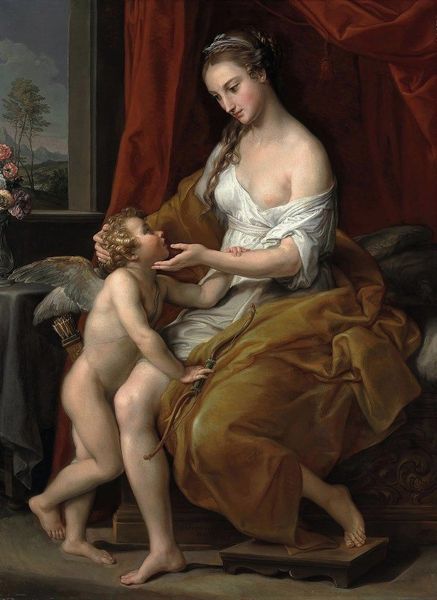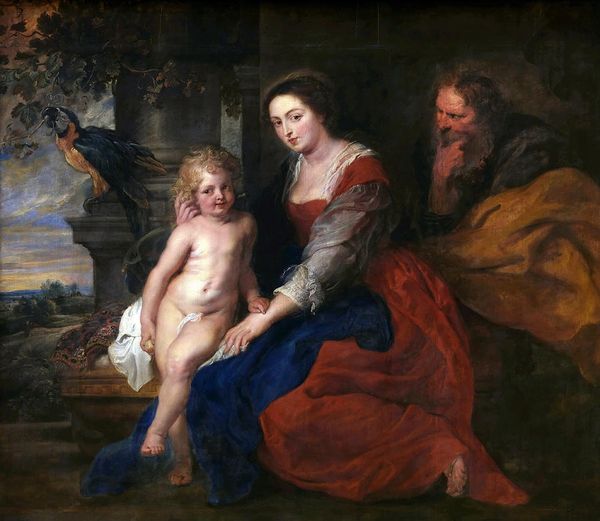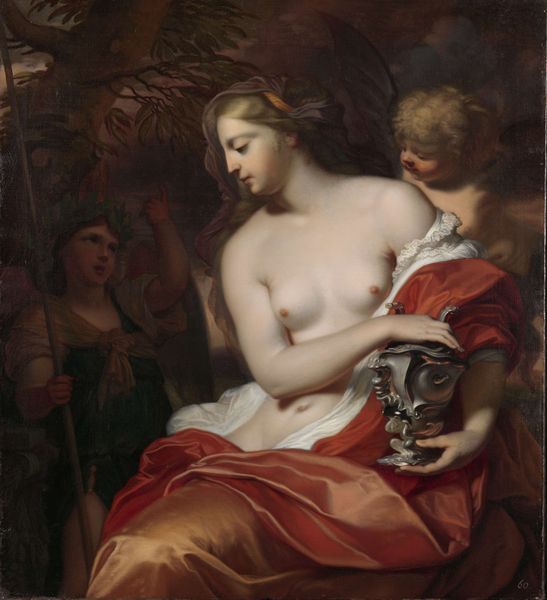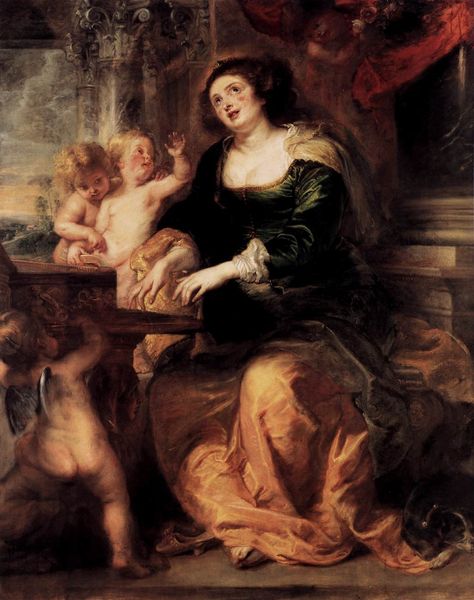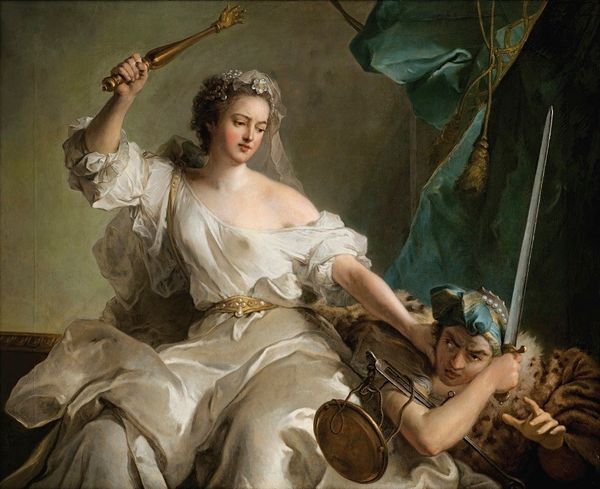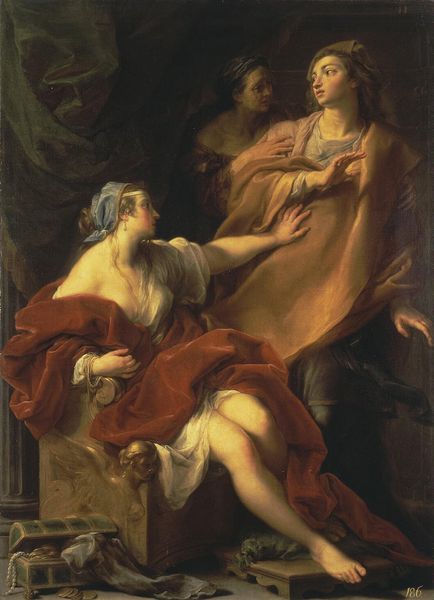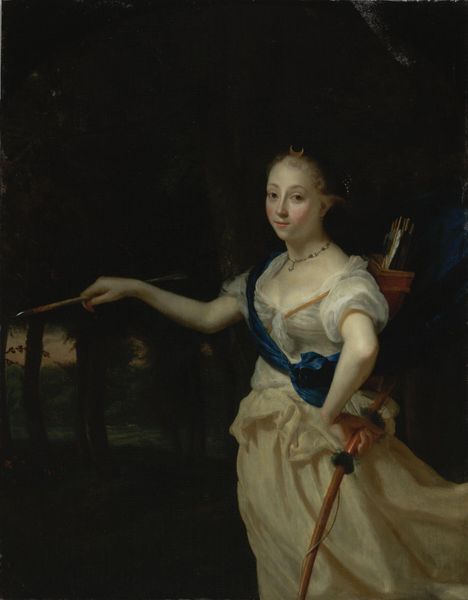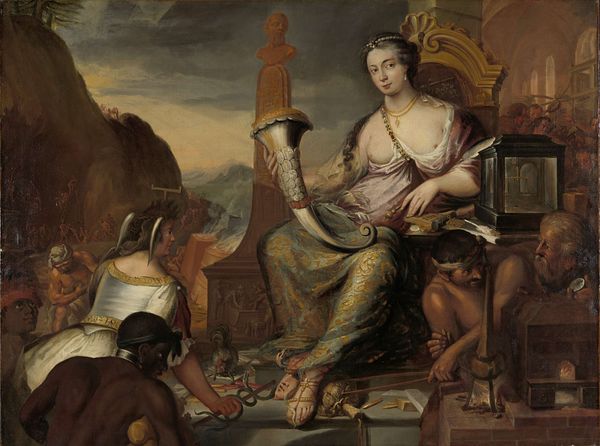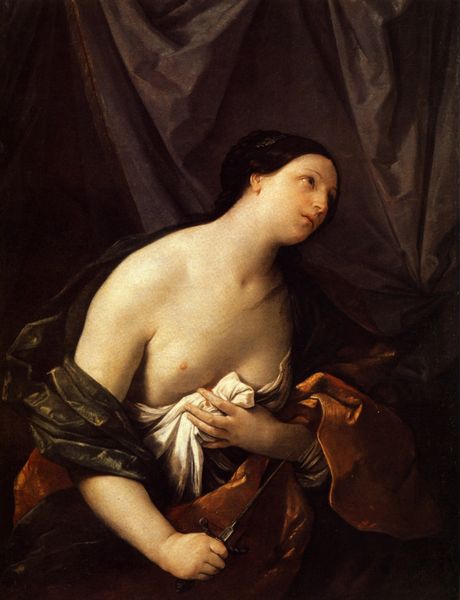
oil-paint
#
allegory
#
baroque
#
fantasy art
#
oil-paint
#
figuration
#
history-painting
#
nude
Dimensions: height 126 cm, width 105.5 cm, depth cm
Copyright: Rijks Museum: Open Domain
Curator: Looking at Mattheus Terwesten's "Allegorie op de vrijheid," or "Allegory of Freedom," from 1701, presently held in the Rijksmuseum. Editor: Immediately, the figures strike me. There's a sensuous quality to the brushstrokes, especially noticeable in the depiction of flesh and drapery, creating a sort of subdued, almost melancholic ambiance. Curator: Terwesten employs a classical compositional structure here, reminiscent of Baroque allegorical painting. Consider how the central figure, likely representing Liberty, is strategically positioned in a pyramidal format. This placement immediately grants her dominance within the picture plane. Editor: Absolutely. But what intrigues me more are the raw materials. Think of the cost of oil paints during this period, or even the availability of pigments. What kind of labor went into producing the canvas, grinding the colors? Did this context influence the symbolic representation of liberty itself? The putti tugging at the fasces could signify exploited labor creating power? Curator: That's an interesting interpretation. We might see the fasces as emblems of power and unity rather than labor, and their placement in proximity to Liberty's hand infers a deliberate connection, no? The composition seems quite precise in that respect. And there's certainly a sophisticated interplay between the use of light and shadow. Editor: Agreed. But look at the way the light caresses the folds of the fabric. Did Terwesten consider where his pigment was sourced and its trade, especially thinking of colonialism? These were all commodities deeply involved in wealth inequality, so for Terwesten to have his sitter drape themselves in expensive dyes could be seen as almost satirical. Curator: These are definitely worthwhile connections. Thinking about how his use of allegorical language reinforces visual and political orders really shapes the work’s effectiveness, though. Editor: It does, I agree, make the piece an example of the period's complex engagement with socio-economic tensions. Curator: Thinking about these things definitely has deepened my perception and experience. Editor: For me as well. Thanks for providing new ways for seeing.
Comments
No comments
Be the first to comment and join the conversation on the ultimate creative platform.
